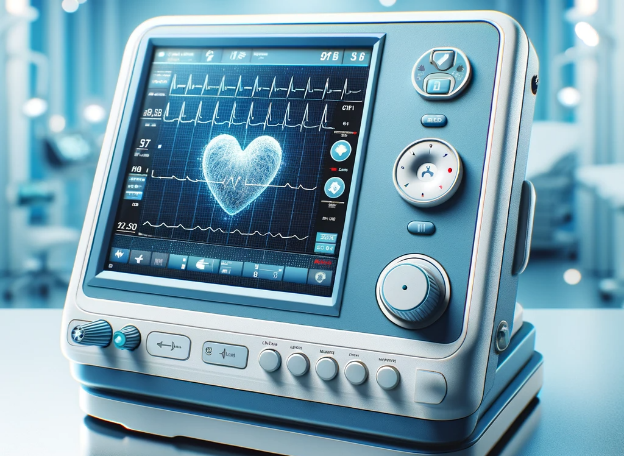
I. Introduction
In the realm of medical marvels, the pursuit of excellence in quality standards takes center stage, and the ISO 13485 certification emerges as the guiding beacon. This certification, akin to a gold standard, delineates the stringent requirements for a robust Quality Management System tailored to the unique challenges of the medical industry.
A. Importance of Quality Standards in the Medical Industry
The medical industry, a guardian of human health, demands stringent quality standards. Technological advancements and an unwavering focus on patient well-being underscore the paramount need for such standards.
- Ensuring Patient Safety: In the medical realm, a steadfast commitment to patient safety is non-negotiable. Quality standards act as sentinels, ensuring that medical devices, pharmaceuticals, and healthcare practices strictly adhere to safety measures, minimizing risks in treatments.
- Meeting Regulatory Requirements: Governments and regulatory bodies globally establish stringent guidelines to uphold the integrity of medical products and services. Adherence to these regulations is not just a legal obligation; it’s fundamental to maintaining trust within the healthcare community.
- Enhancing Product Reliability: Quality standards, serving as blueprints for medical product development, enable manufacturers to enhance product reliability. This, in turn, leads to improved patient outcomes, fostering confidence within the medical community.
B. Introduction to ISO 13485 Certification and Its Significance
In the sphere of medical industry quality management, ISO 13485 certification emerges as the gold standard.
- Definition and Background: Developed by the International Organization for Standardization (ISO), ISO 13485 outlines comprehensive requirements for a tailored Quality Management System (QMS) in the medical industry. It builds upon ISO 9001 principles, customizing them to address the unique challenges of medical device manufacturing.
- Specific Focus on the Medical Industry: Unlike general quality management standards, ISO 13485 zeros in on the medical sector’s critical nature. Tailored to the intricacies of medical devices, it becomes indispensable for organizations committed to delivering high-quality healthcare products.
- Significance in Ensuring Quality and Compliance: ISO 13485 certification signifies an unwavering commitment to quality, regulatory compliance, and continuous improvement. Achieving this certification not only demonstrates adherence to international best practices but also provides a competitive edge in the global medical market.
II. Understanding ISO 13485 Certification
A. Explaining the Fundamentals of ISO 13485
- Quality Management System (QMS): ISO 13485’s core lies in establishing a robust QMS. This system, encompassing processes and procedures, ensures the consistent production of safe and effective medical devices. It addresses facets such as management responsibility, resource management, and product realization.
- Risk Management: The standard places a strong emphasis on identifying and mitigating risks associated with medical device design, development, and manufacturing. This proactive risk management approach enhances product safety and contributes to overall process efficiency.
- Regulatory Compliance: Aligned with regulatory requirements globally, ISO 13485 provides a unified approach to compliance. Organizations adhering to ISO 13485 can streamline processes, meeting regulatory expectations, and facilitating approval and market access for medical devices.
B. Highlighting its Specific Application to the Medical Device Industry
- Tailored for Medical Devices: Unlike generic quality management standards, ISO 13485 is specifically crafted for organizations involved in the entire lifecycle of medical devices. From design and development to production, storage, distribution, installation, and servicing, it covers all critical aspects of healthcare products.
- Lifecycle Approach: ISO 13485 adopts a holistic, lifecycle approach to quality management in the medical device industry. It ensures that quality considerations are integrated at every stage, from initial concept and design to post-market surveillance and disposal.
III. Benefits of ISO 13485 Certification
A. Ensuring Patient Safety and Product Quality
- Improved Product Quality: ISO 13485 certification emphasizes quality management throughout the entire lifecycle of medical devices. Adhering to its rigorous requirements allows organizations to enhance product quality, leading to increased customer satisfaction and the delivery of safe and effective medical devices.
- Stringent Risk Management: The standard’s focus on risk management significantly contributes to patient safety. By identifying and mitigating potential risks in design, development, and manufacturing processes, organizations can proactively prevent issues and ensure a safer healthcare environment.
B. Facilitating Market Access and Regulatory Compliance
- Global Recognition: ISO 13485 certification is globally recognized and accepted. This certification signals to regulators, healthcare professionals, and consumers that an organization is committed to meeting international quality standards for medical devices. This global recognition facilitates smoother market access, especially when expanding into new regions.
- Streamlined Regulatory Processes: Designed to align with regulatory requirements in various jurisdictions, ISO 13485 certification helps organizations streamline regulatory processes. Implementation of the standard makes it easier to navigate complex and evolving regulatory landscapes, expediting product approvals and reducing barriers to market entry.
C. Enhancing Organizational Efficiency and Risk Management
- Efficient Processes and Operations: ISO 13485 certification encourages the establishment of efficient and standardized processes within an organization. By documenting and optimizing these processes, companies can enhance overall operational efficiency. This not only translates into cost savings but also ensures that products are consistently manufactured to high-quality standards.
- Comprehensive Risk Management: The standard’s holistic approach to risk management extends beyond product safety. It includes the identification and mitigation of risks related to organizational processes, personnel, and external factors.
- Competitive Edge in the Industry: ISO 13485 certification becomes a mark of excellence in the medical device industry. Displaying a commitment to quality and compliance gives organizations a competitive edge.
IV. Conclusion
A. Summarizing the Key Advantages of ISO 13485 Certification
In essence, ISO 13485 certification brings a multitude of advantages to organizations in the medical field.
- Elevated Product Quality: ISO 13485 certification ensures that organizations implement robust quality management systems, leading to the consistent production of high-quality medical devices.
- Enhanced Patient Safety: The standard’s focus on risk management contributes to a safer healthcare environment by proactively identifying and mitigating potential risks associated with medical devices.
- Global Market Access: ISO 13485 certification is a passport to international markets, globally recognized and aligning with regulatory requirements in various regions.
- Operational Efficiency: By optimizing processes and promoting efficiency, the standard helps organizations reduce costs, improve productivity, and maintain a competitive edge in the industry.
- Streamlined Regulatory Compliance: ISO 13485 certification facilitates compliance with complex and evolving regulatory landscapes, expediting product approvals and market entry.
B. Encouraging Organizations in the Medical Field to Prioritize Quality Standards
As the healthcare landscape evolves, the importance of prioritizing quality standards cannot be overstated. ISO 13485 certification provides a structured framework for organizations to ensure the safety and efficacy of their medical products. By embracing this standard, companies signal their commitment to excellence and customer satisfaction. It’s about setting a higher standard and contributing to the overall advancement of healthcare globally.
C. Reinforcing the Role of ISO 13485 in Elevating Excellence in Healthcare
ISO 13485 goes beyond being a certification; it is a commitment to excellence in healthcare. By adhering to the principles outlined in the standard, organizations contribute to the elevation of healthcare standards worldwide. Patient safety, product quality, and efficient operations become integral components of an organization’s DNA. ISO 13485 certification becomes a guiding force propelling the medical industry toward a future where innovation and reliability coexist seamlessly, ensuring the well-being of patients and the sustainability of healthcare systems.
In conclusion, ISO 13485 certification is not merely a checkbox; it’s a strategic investment in the future of healthcare. Organizations that prioritize and embrace this standard position themselves as leaders in quality and contribute significantly to the ongoing evolution of the medical industry. As we look ahead, let ISO 13485 certification be the beacon that guides organizations toward a future where healthcare excellence is not just a goal but a reality.




